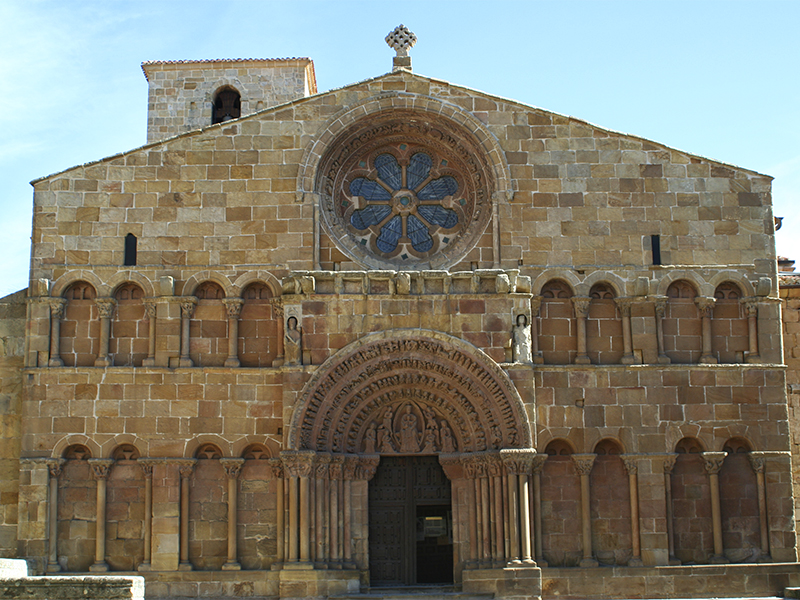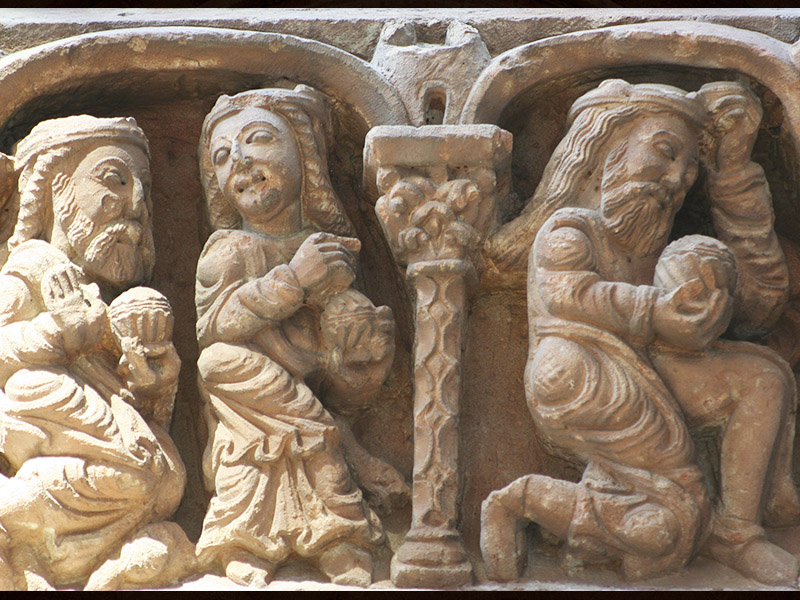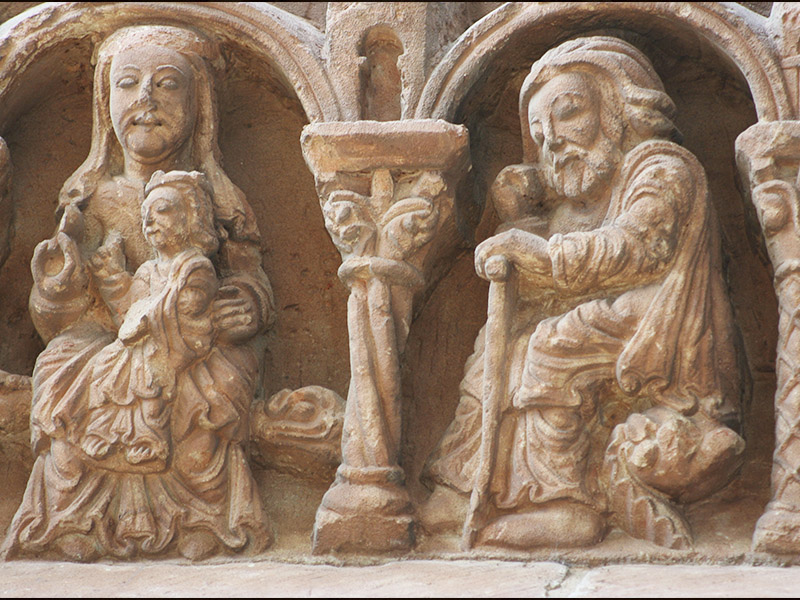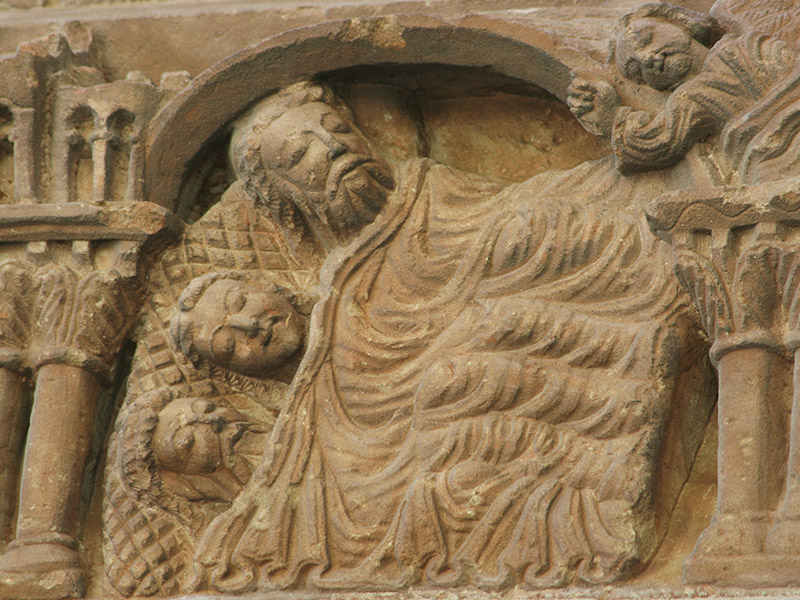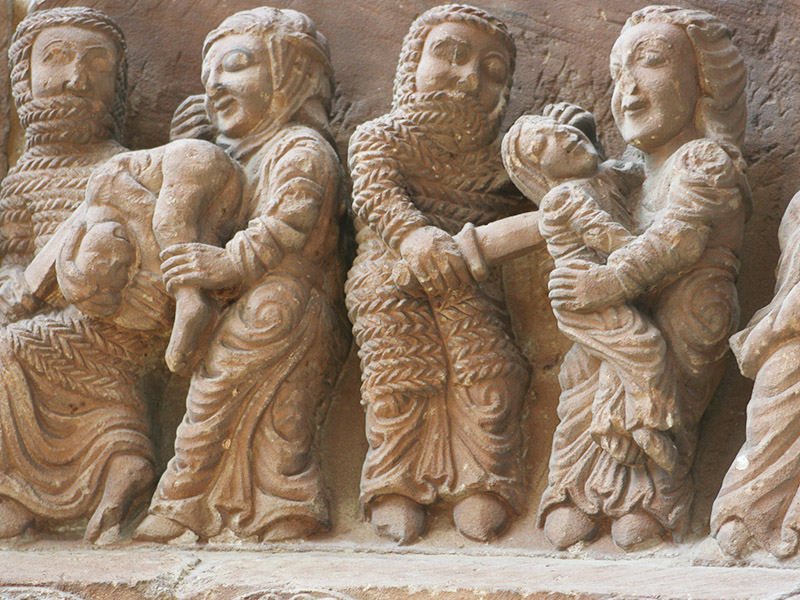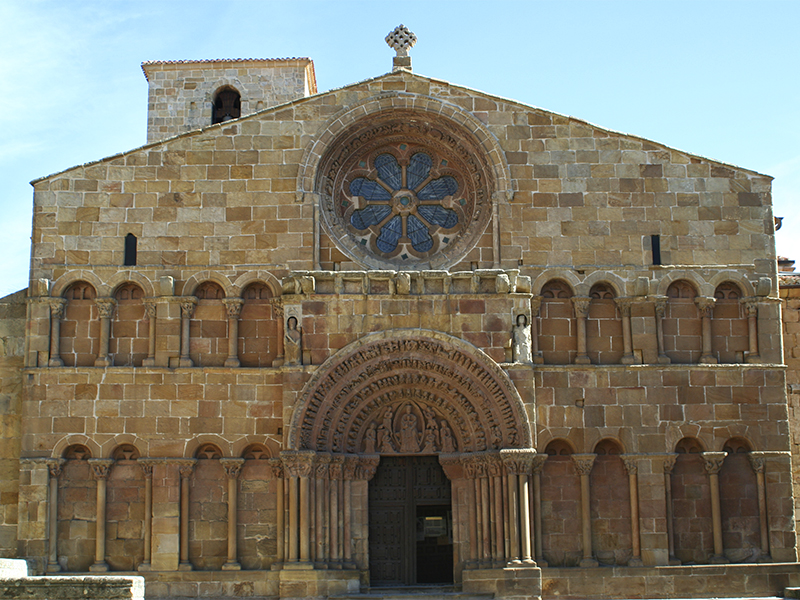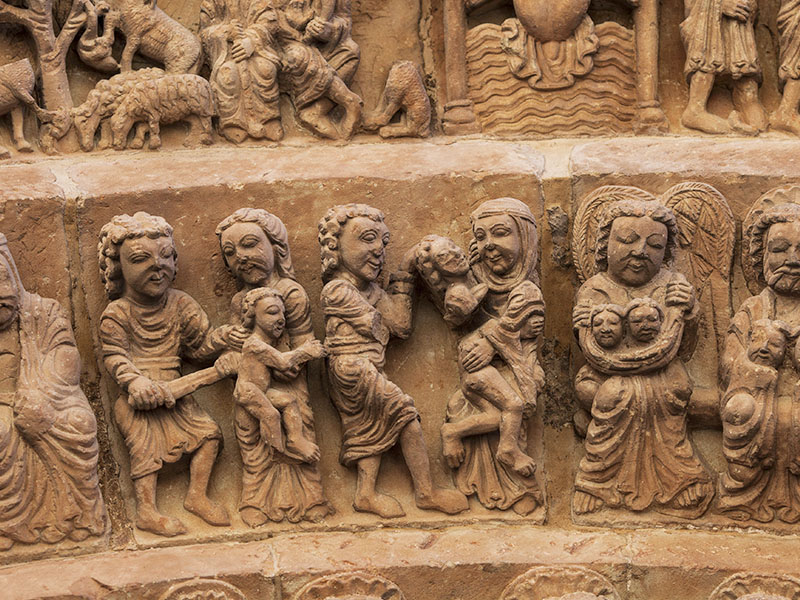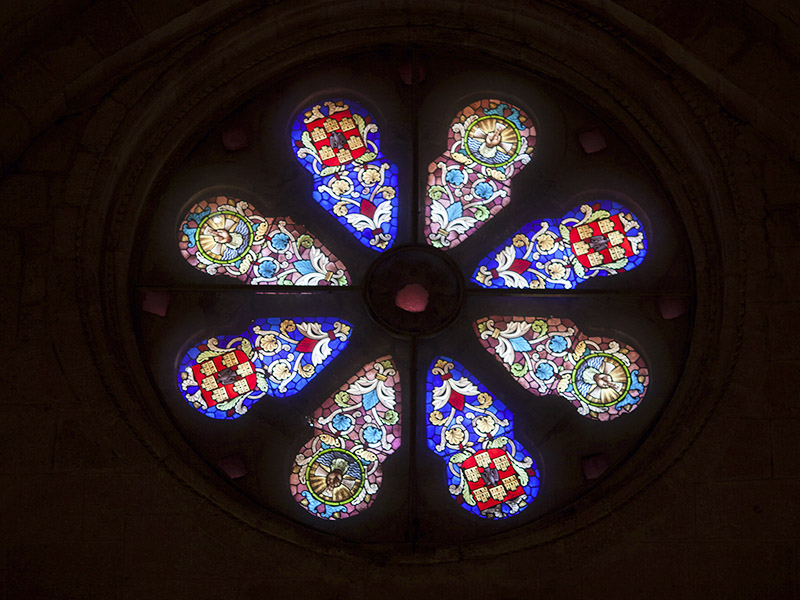CHURCH OF SANTO DOMINGO
THE BIBLE ON STONE
HISTORY
It is difficult to prove its origin but it has been historically said that at the beginning of the XII century a modest Romanesque church was erected in this place, from which only the tower is conserved, honouring Santo Tomé.
Around it, a parish with the same name was born next to the wall, and located in fornt of one of its doors, the Door of "El Rosario". At the end of that century, the temple was deeply renovated enlarging the naves and building the monumental façade we can admire today, possibly under the patronage of Alfonso 8th and his wife Leonor de Plantegenet.
In 1556 was funded together with this building a Dominican monastery which due the lack of money to build an own chapel agreed to use the Santo Tomé parish. This would imply that it would lately be renamed as Santo Domingo.
Once installed the Dominicans, the the Romanesque apse was demolished and the last part of the nave, the crossing and the existing apse was built under the direction of Francisco de Revilla. In 1586 the connection between the monastery and the temple was built. With the Mendizabal's disentailment in 1836, Dominicans were forced to abandon de building until the new tenants arrived in 1853, a Poor Claire Sisters community.
In 1894, the bishop of Osma, don Victoriano Guisasola, suppressed the parish church of Santo Tomé, being from then on exclusively for the convent. Nowadays it continues to be the base of the Order of Saint Claire and it was declared Site of Cultural Interest in 2000.
THE TEMPLE
It has Latin cross floor plan, with three naves, crossing a bit to the middle due to the enlargement and pentagonal apse. The oldest part corresponds to the north wall and the tower, from the beginning of the 12th century. At the end of this century the façade and the rest of the naves were erected. Both laterals are covered by barrel vaults whose traverse ribs are supported on measurements with barbarian faces and host the two 17th century chapels of the Santo Cristo and of the Rosario which, together with the chancel, contrast with the rest of the Romanesque ambience for being Renaissance style.
The central nave is divided into three parts with slightly pointed barrel vaults, separating this space from the lateral ones by side arches supported in groups of 12 or 14 columns that form a robust pilaster. This nave is lighted up by the big rose window bearing glazing from 1917 while the laterals keep a little light coming from two small windows with round arch. Several sepulchres of the San Clemente family were incorporated in the walls.
On the 16th century the apse was rebuilt being covered with a horseshoe arch with star motifs and later decorated with a beautiful baroque altarpiece on which the Santo Tomé carving stands out, made by Francisco Cambero, sculptor, and Constantino del Castillo, painter, among others. The major chapel is now separated from the rest by a fence that gives the Claire sisters more privacy.
The tower is very robust and of square floor-plan with two floors with blind archs without ornaments. A decorated impost sperates the upper floor. On the upper floor there are big blind archs and on them, the rounded archs of the bells.
FRONT
The temple stands out because of its splendid façade, for many one of the best portal of the Spanish Romanesque, of French influence (Our Lady of Poitiers), what explains the participation of Queen Leanor on the enlargement and renewal of the Church on the second half of the 12th century.
It has the shape of a triangular pediment crowned by a fleur-de-lys cross, with a big rose window and rows of blind arcades on the laterals distributed on two superposed stages. The portal, knowns as the Bible on Stone, had the role of illustrating the illiterate faithful of the Medieval Ages the Holy history.
On the tympanum, there appears sitting Christ with the Child, four angels carrying the Evangelists Symbols, the prophet Isaiah and Virgin Mary. The capitals of the entrance jambs are decorated with biblical scenes of the Genesis and of Christ's life. The richness of its archivolts turns it into one of the most praised of the Spanish Romanesque.
The first one represents the 24 elderly musicians of the Apocalypses, the second one the Massacre of the innocents, the third one scenes of the Virgins life, Christ's birth and childhood and the forth one the passion, death and resurrection of Christ.
| Monday to Sunday from 08.00 to 21.00 h. More info about timetables here. |
|
| FREE ENTRANCE | |
| 975 211 239 | |
| “Center of the city route” | |
| Audioguide |








